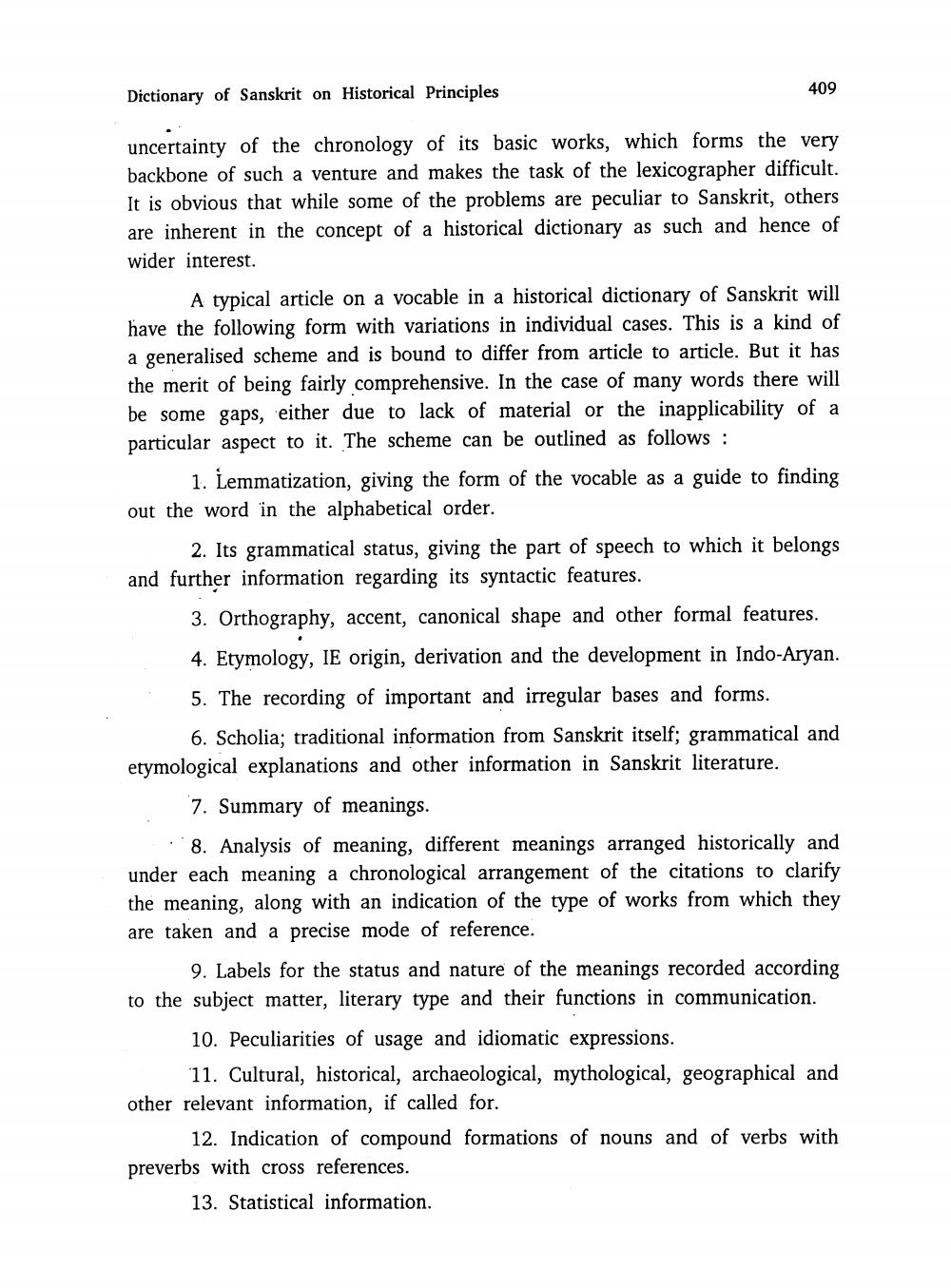________________
Dictionary of Sanskrit on Historical Principles
409
uncertainty of the chronology of its basic works, which forms the very backbone of such a venture and makes the task of the lexicographer difficult. It is obvious that while some of the problems are peculiar to Sanskrit, others are inherent in the concept of a historical dictionary as such and hence of wider interest.
A typical article on a vocable in a historical dictionary of Sanskrit will have the following form with variations in individual cases. This is a kind of a generalised scheme and is bound to differ from article to article. But it has the merit of being fairly comprehensive. In the case of many words there will be some gaps, either due to lack of material or the inapplicability of a particular aspect to it. The scheme can be outlined as follows:
1. Lemmatization, giving the form of the vocable as a guide to finding out the word in the alphabetical order.
2. Its grammatical status, giving the part of speech to which it belongs and further information regarding its syntactic features.
3. Orthography, accent, canonical shape and other formal features.
4. Etymology, IE origin, derivation and the development in Indo-Aryan.
5. The recording of important and irregular bases and forms.
6. Scholia; traditional information from Sanskrit itself; grammatical and etymological explanations and other information in Sanskrit literature.
7. Summary of meanings.
8. Analysis of meaning, different meanings arranged historically and under each meaning a chronological arrangement of the citations to clarify the meaning, along with an indication of the type of works from which they are taken and a precise mode of reference.
9. Labels for the status and nature of the meanings recorded according to the subject matter, literary type and their functions in communication.
10. Peculiarities of usage and idiomatic expressions.
11. Cultural, historical, archaeological, mythological, geographical and other relevant information, if called for.
12. Indication of compound formations of nouns and of verbs with preverbs with cross references.
13. Statistical information.




